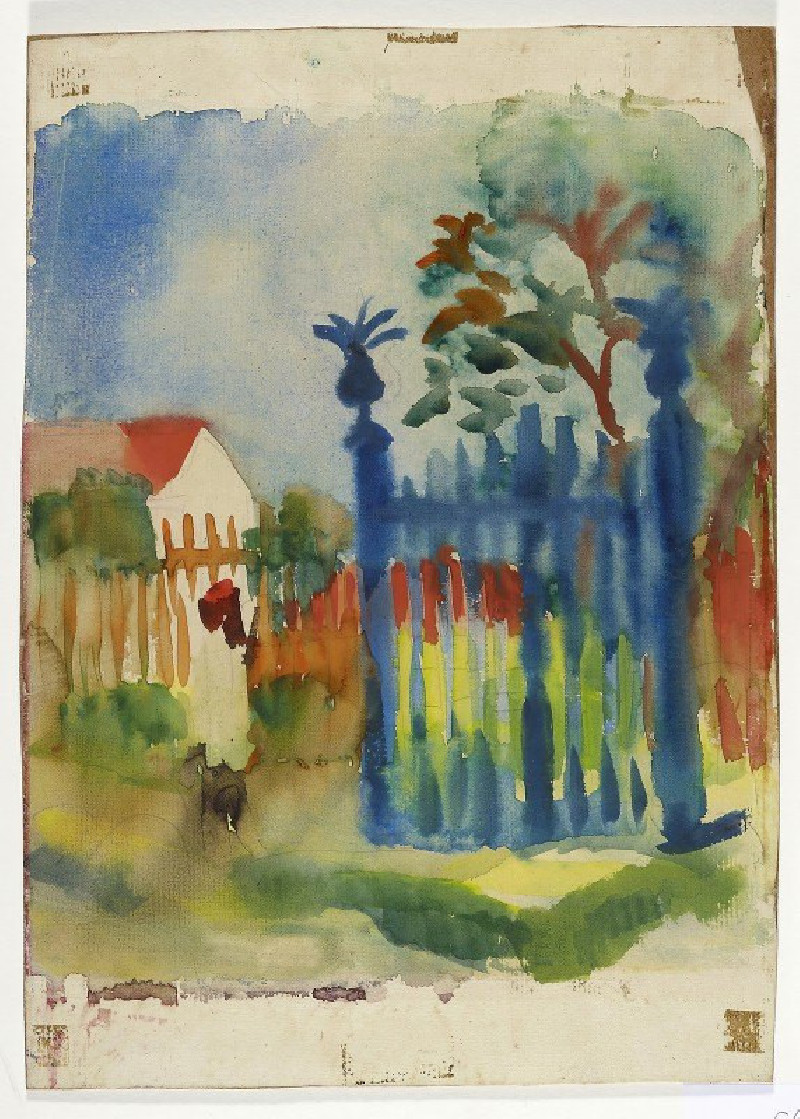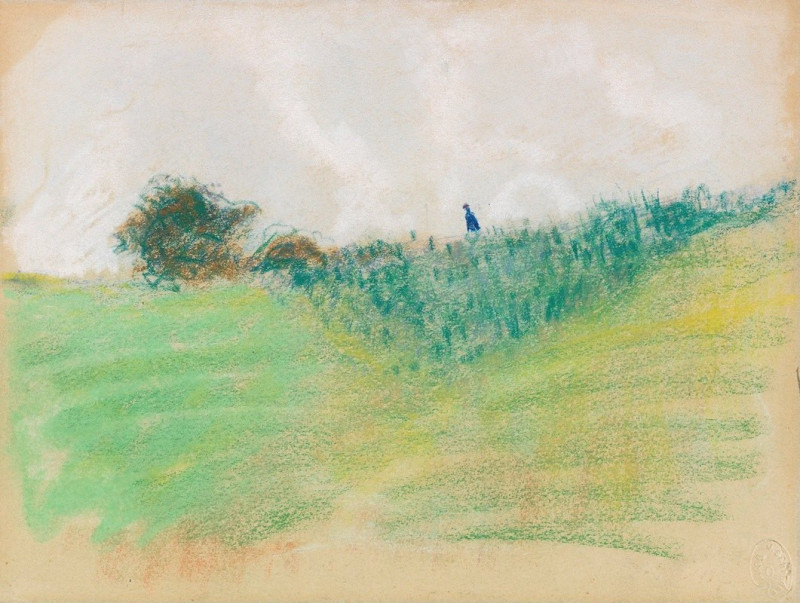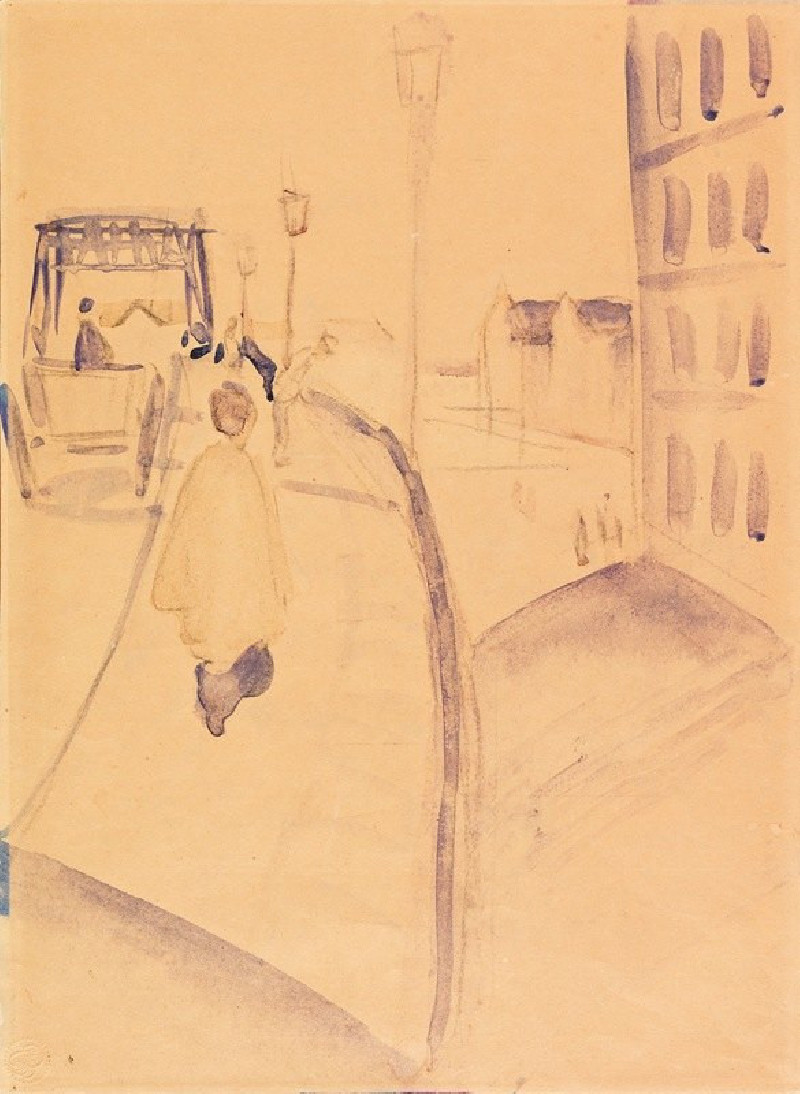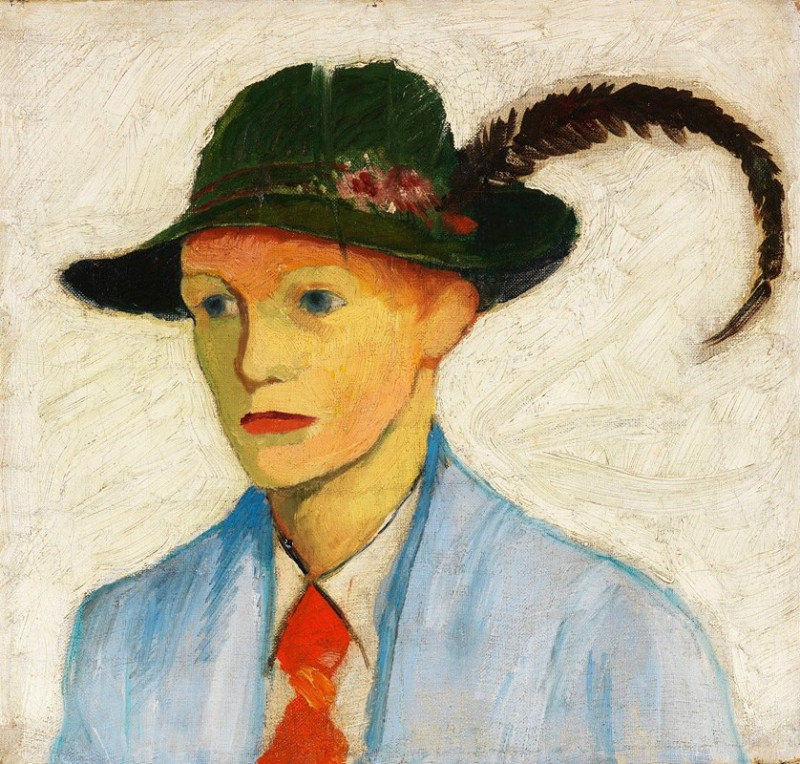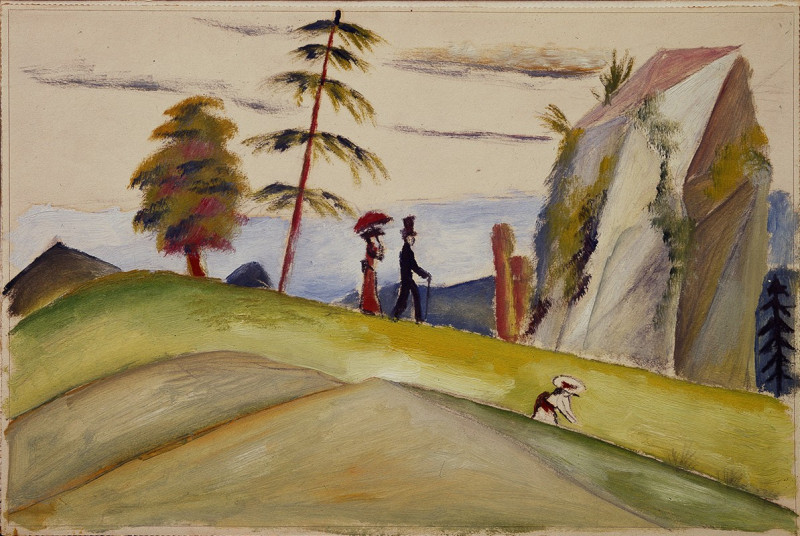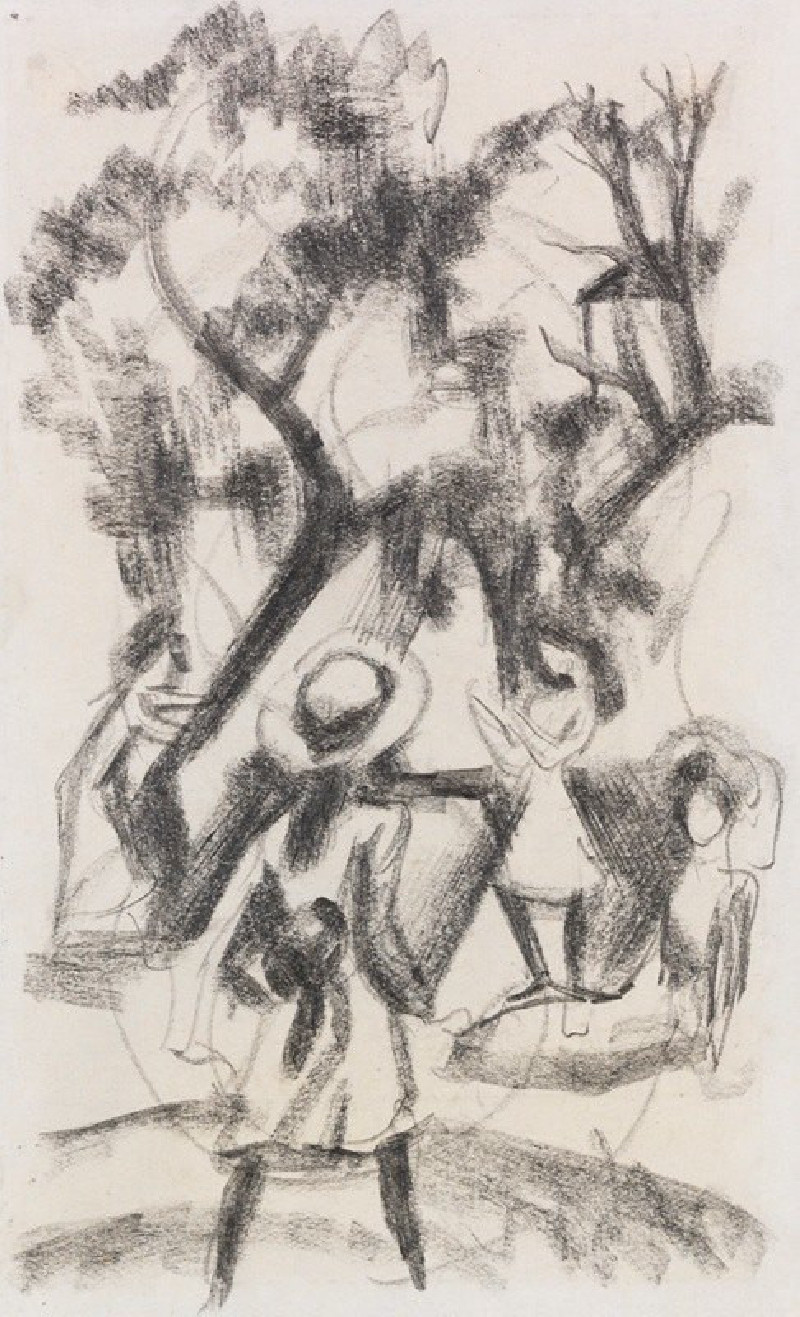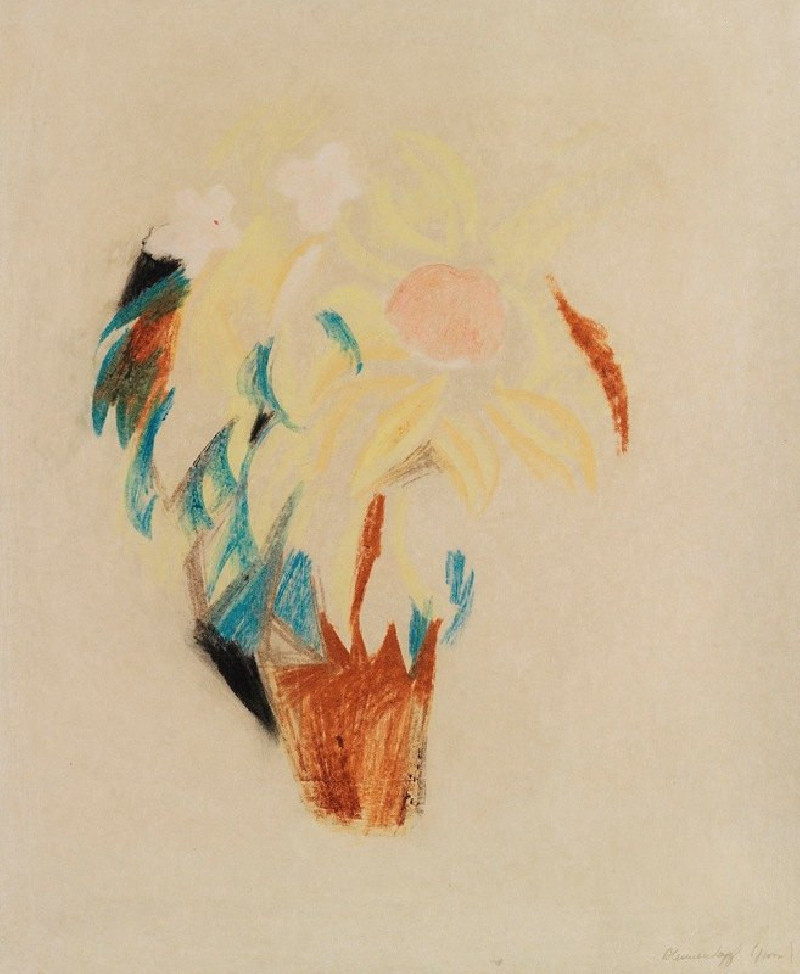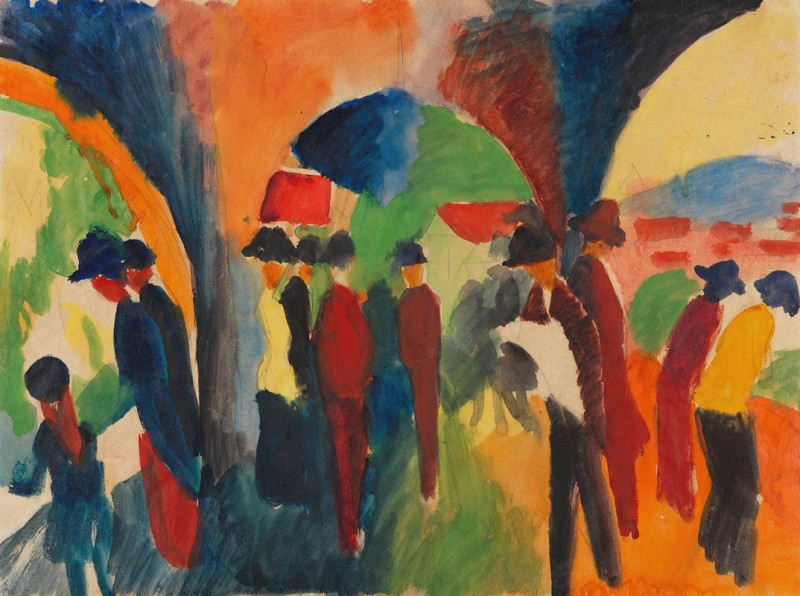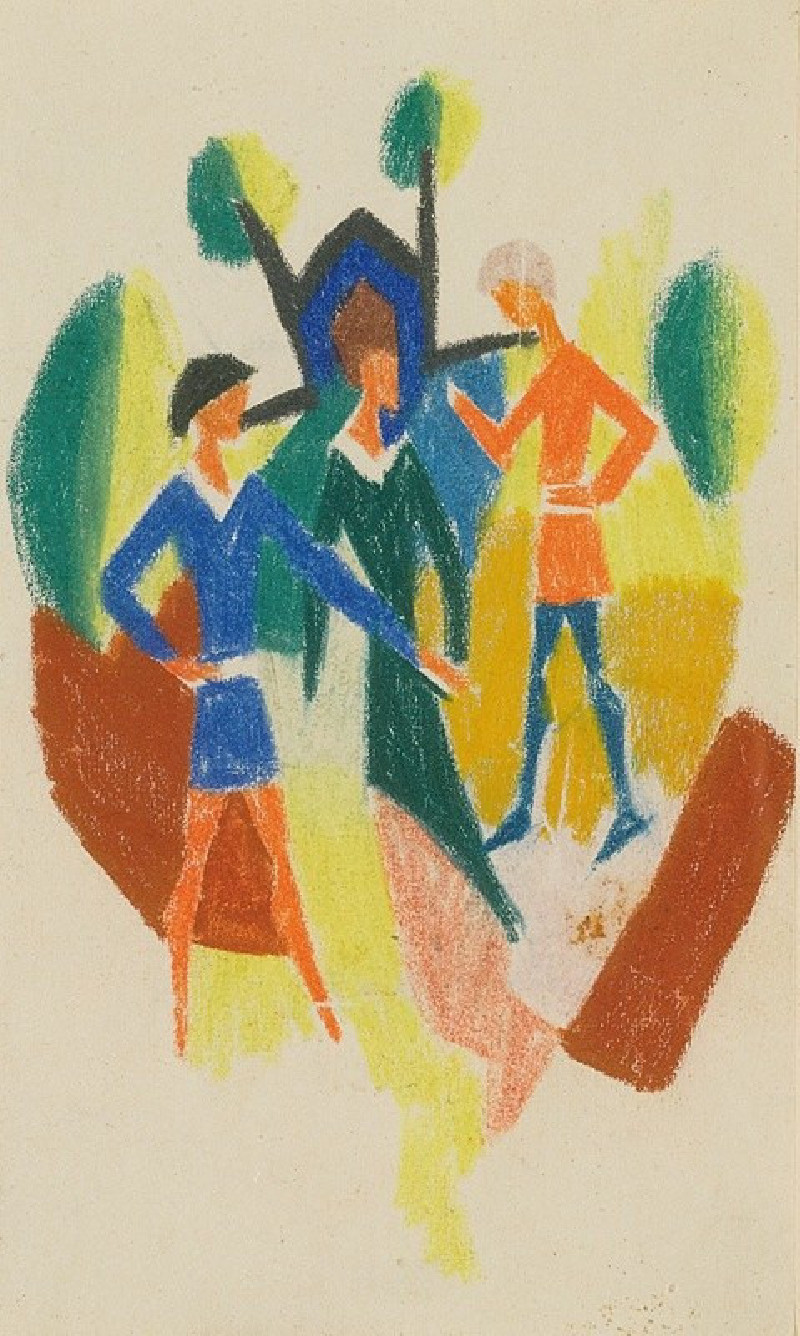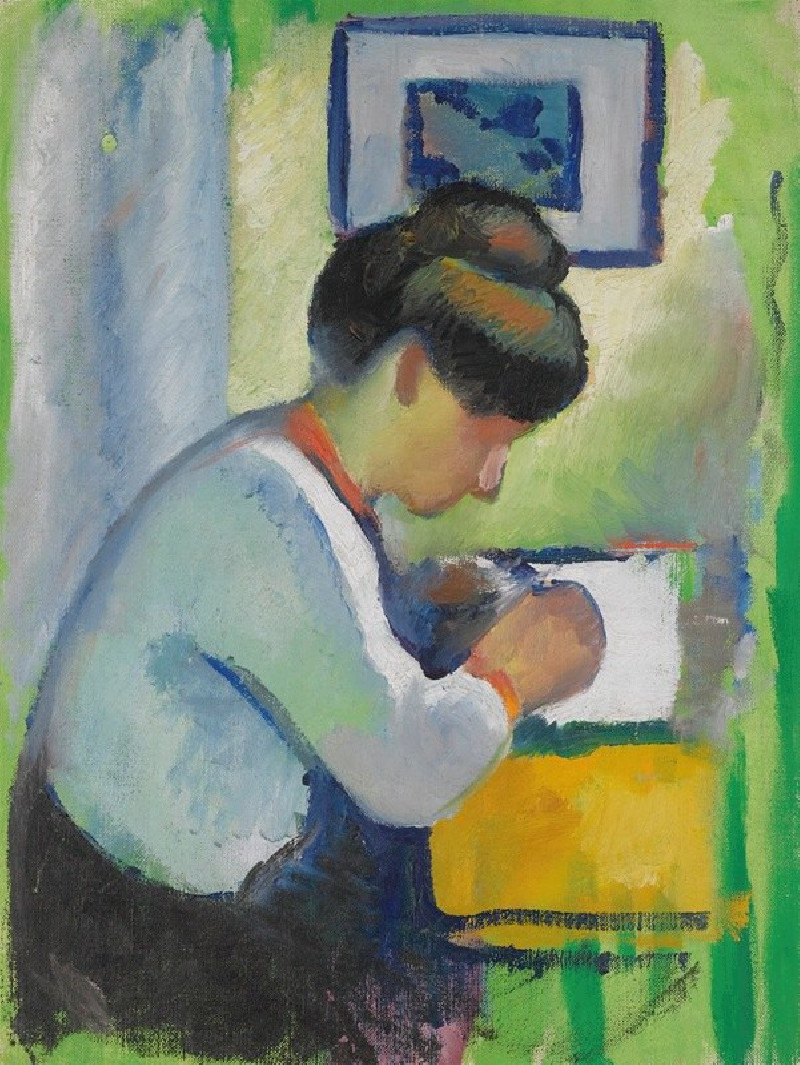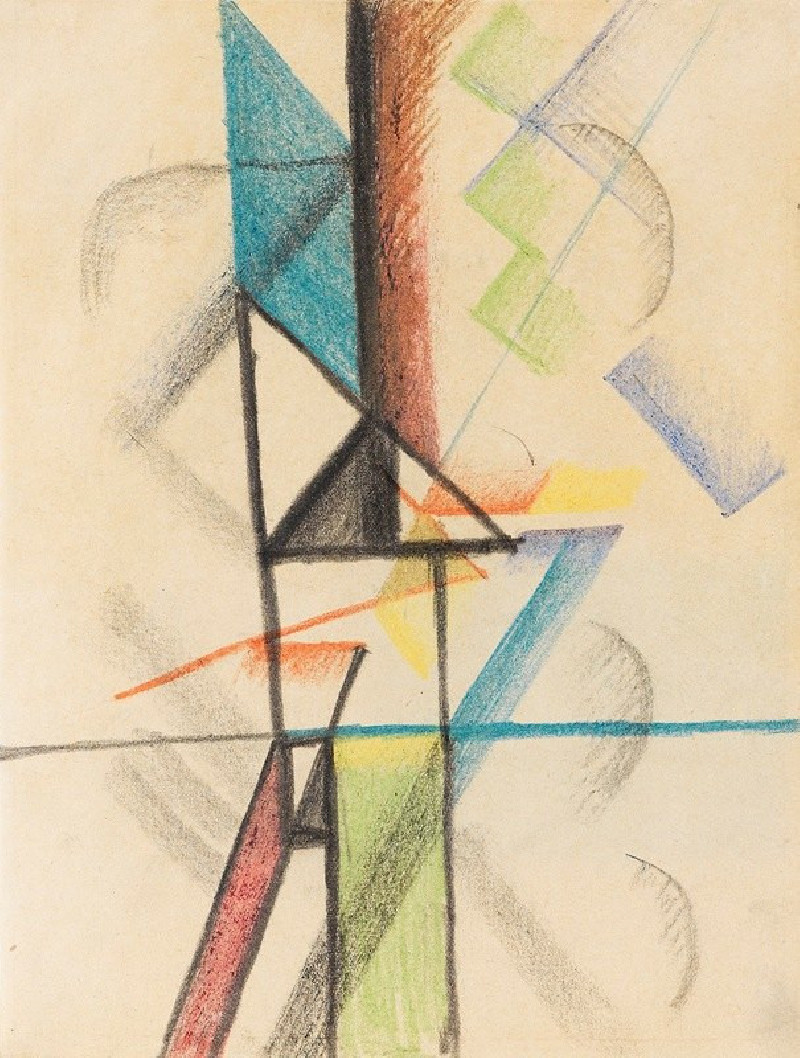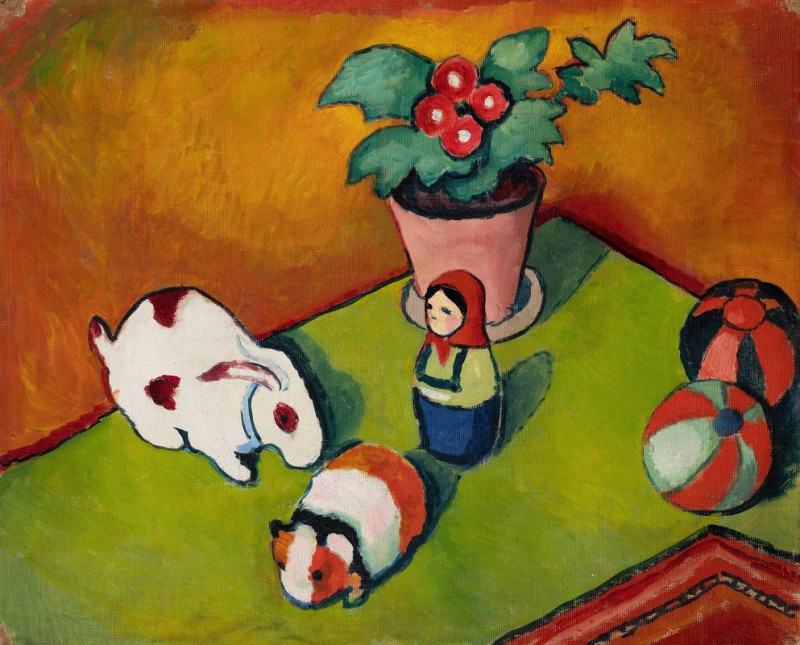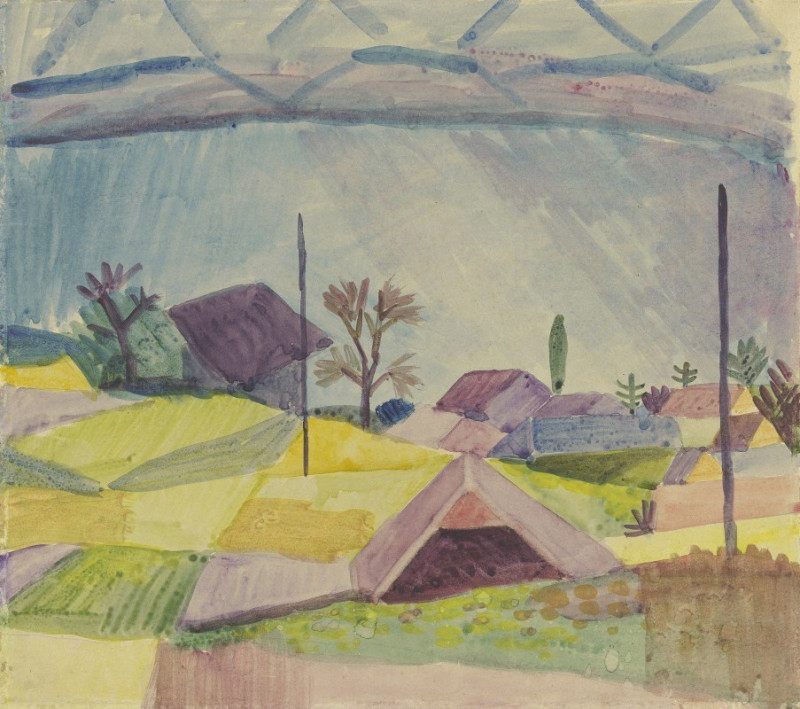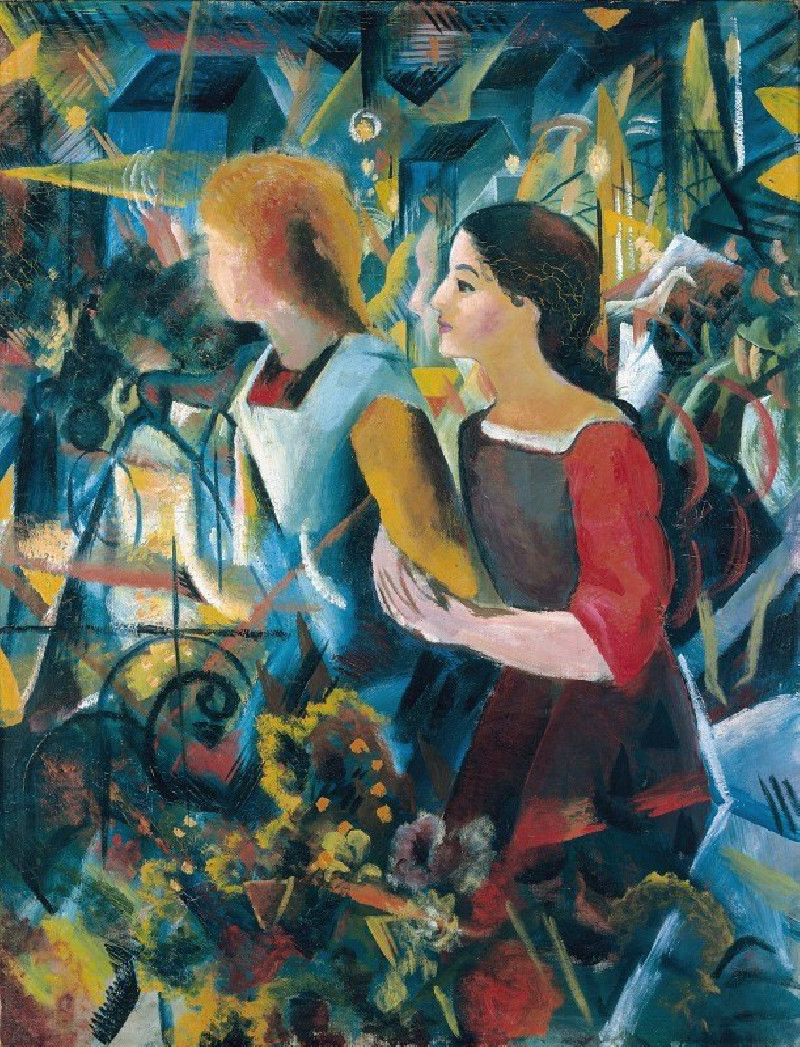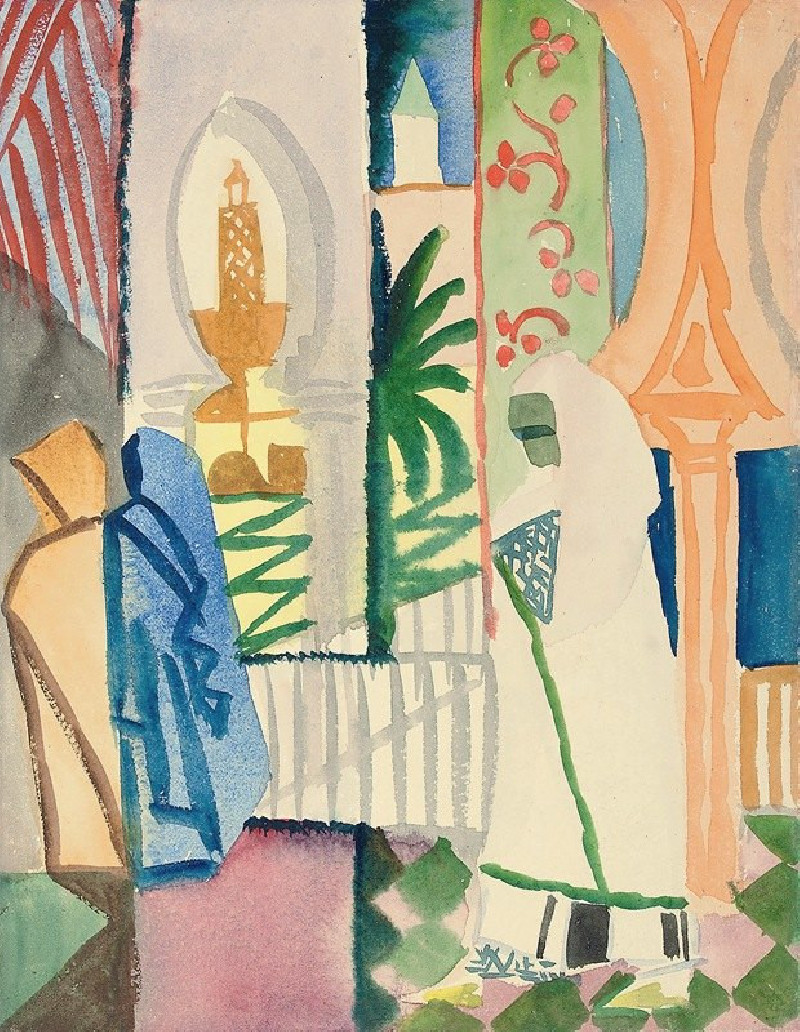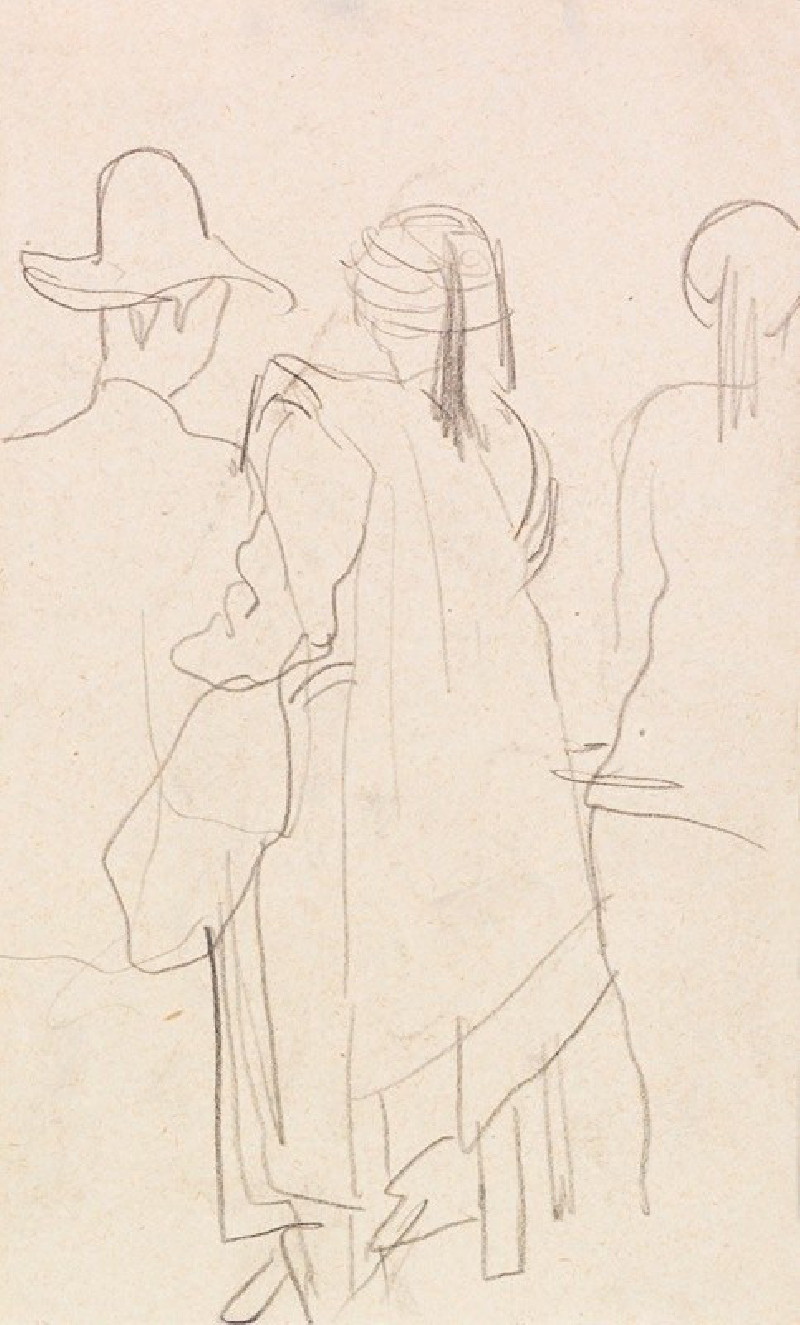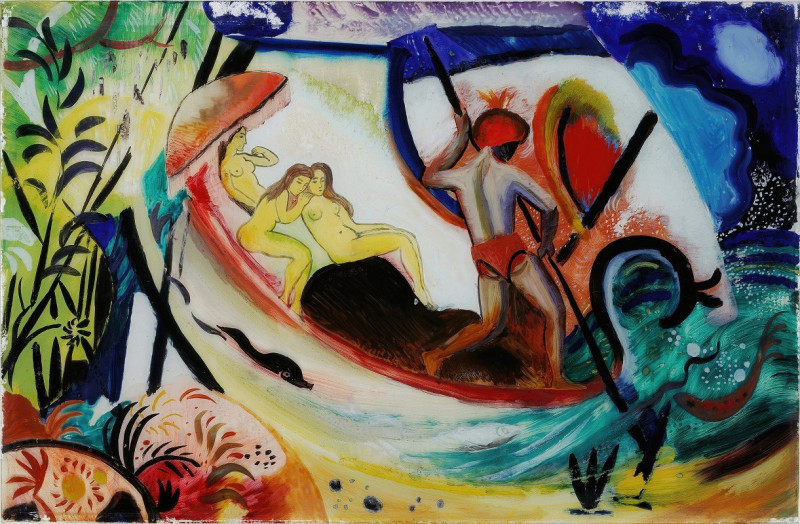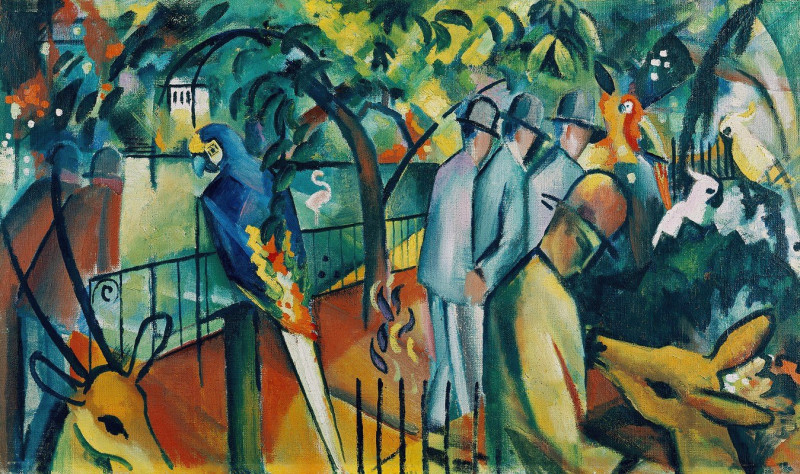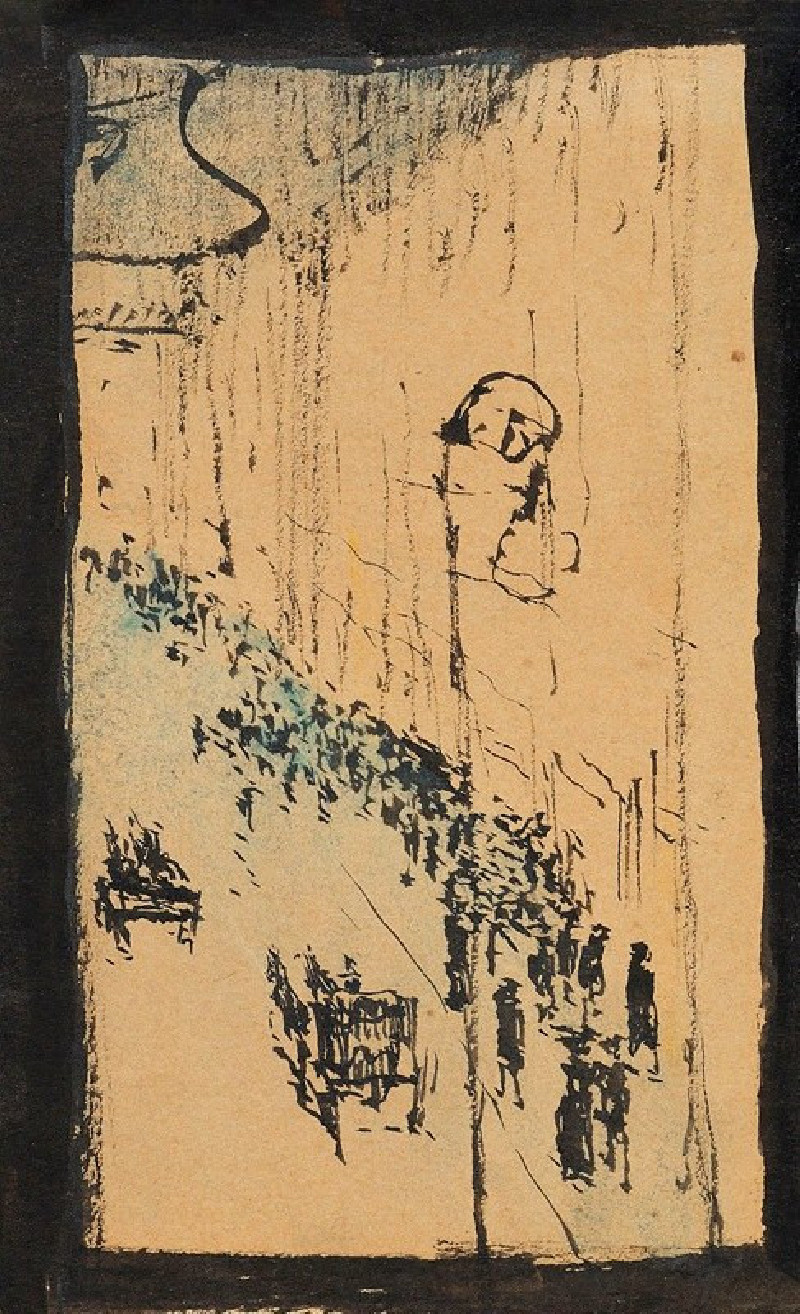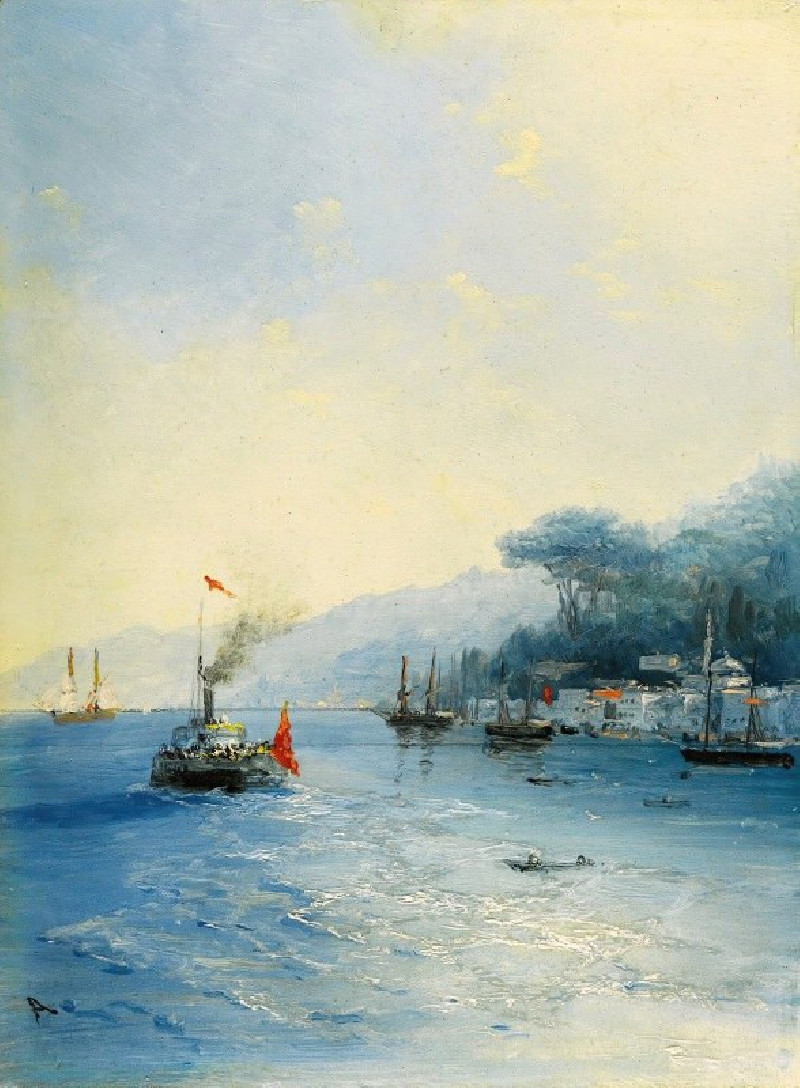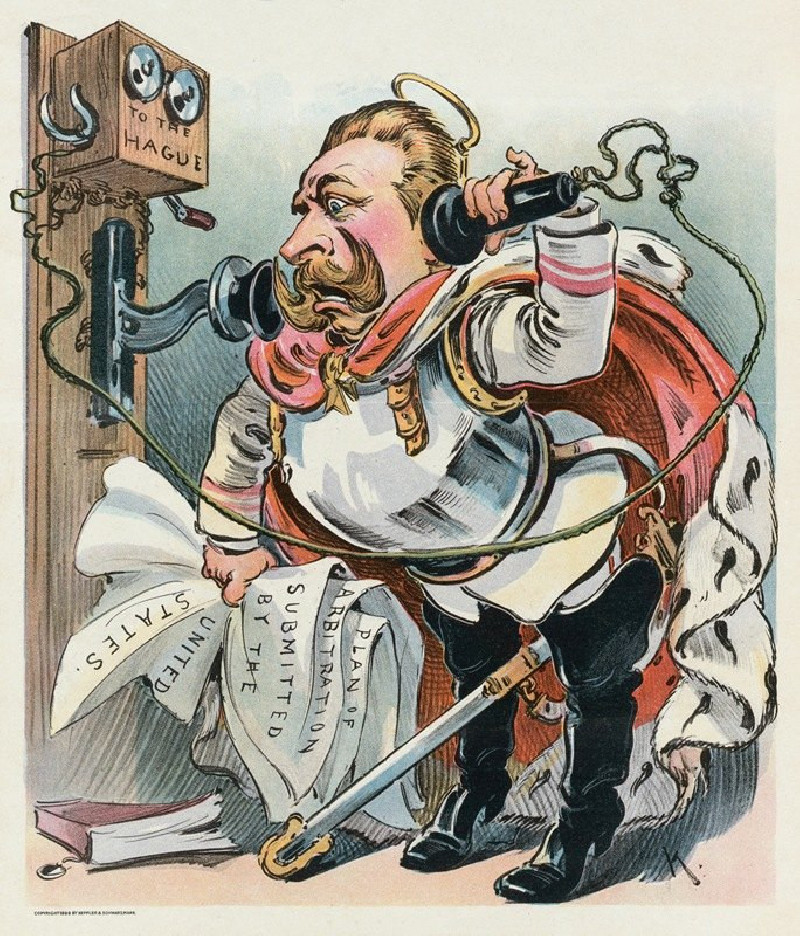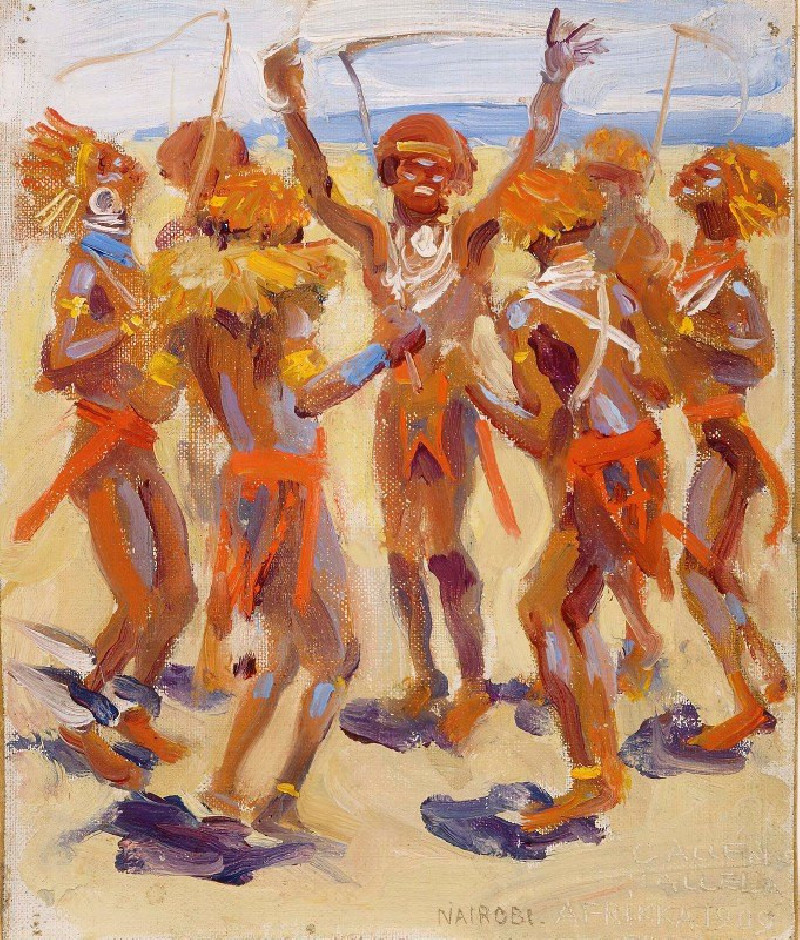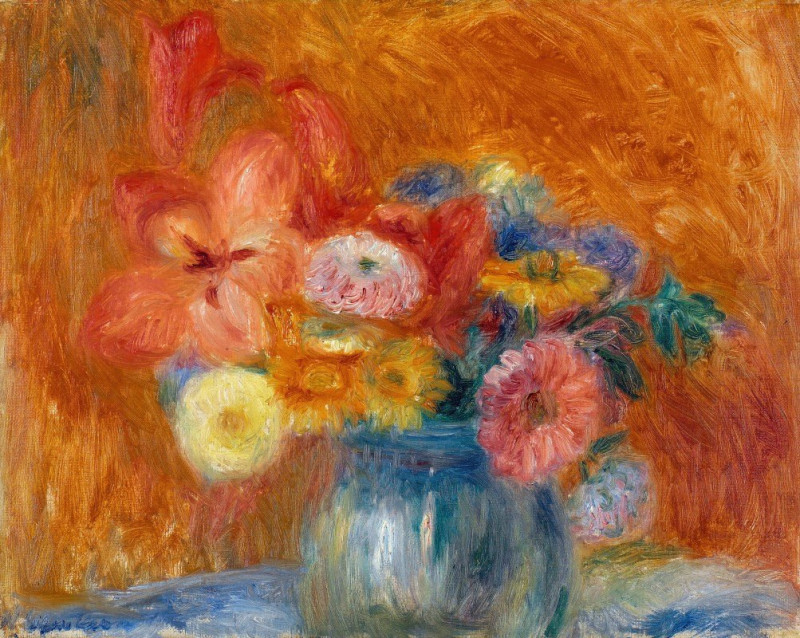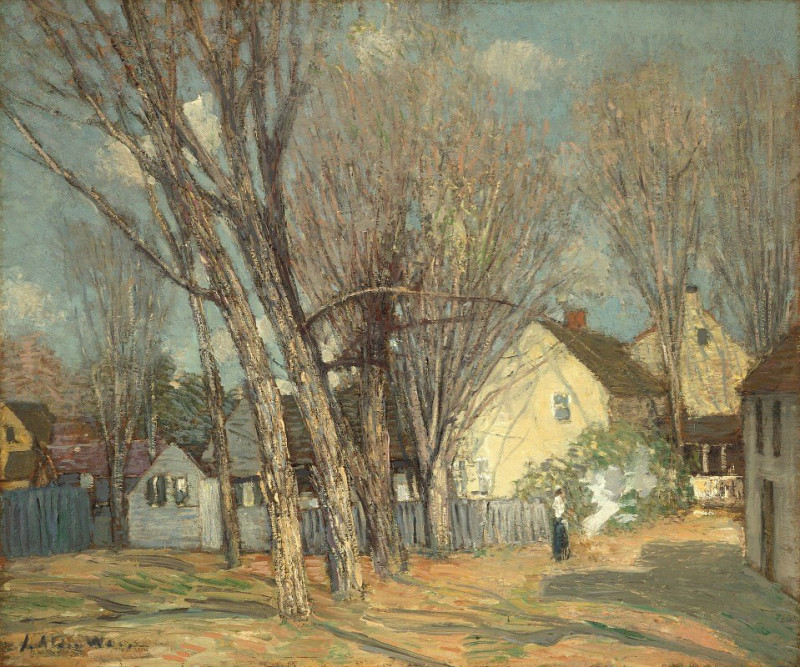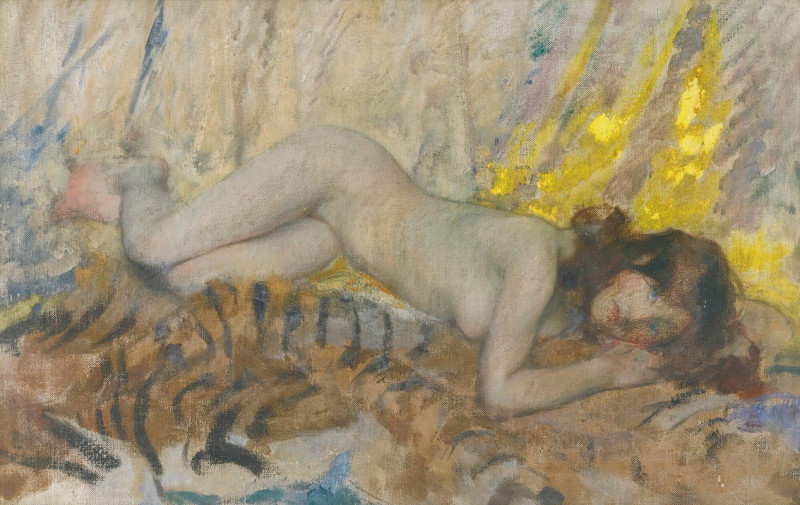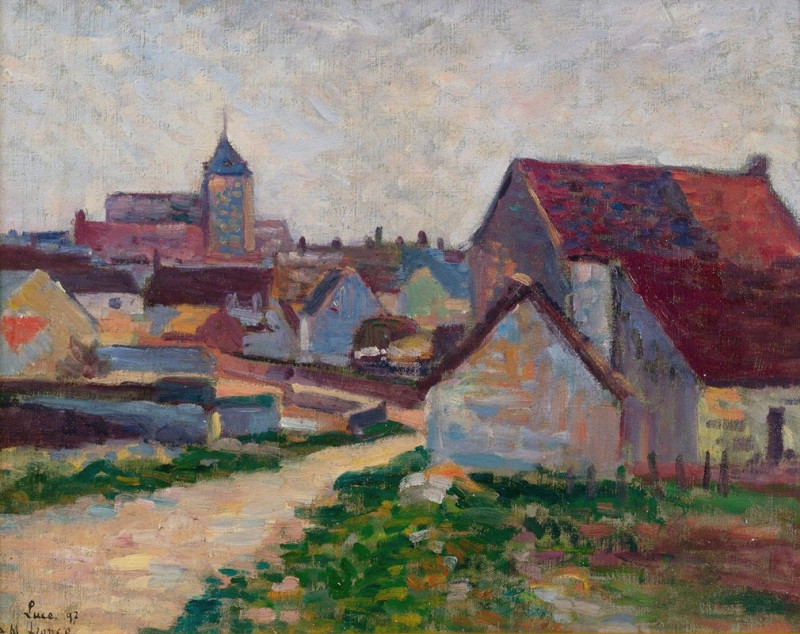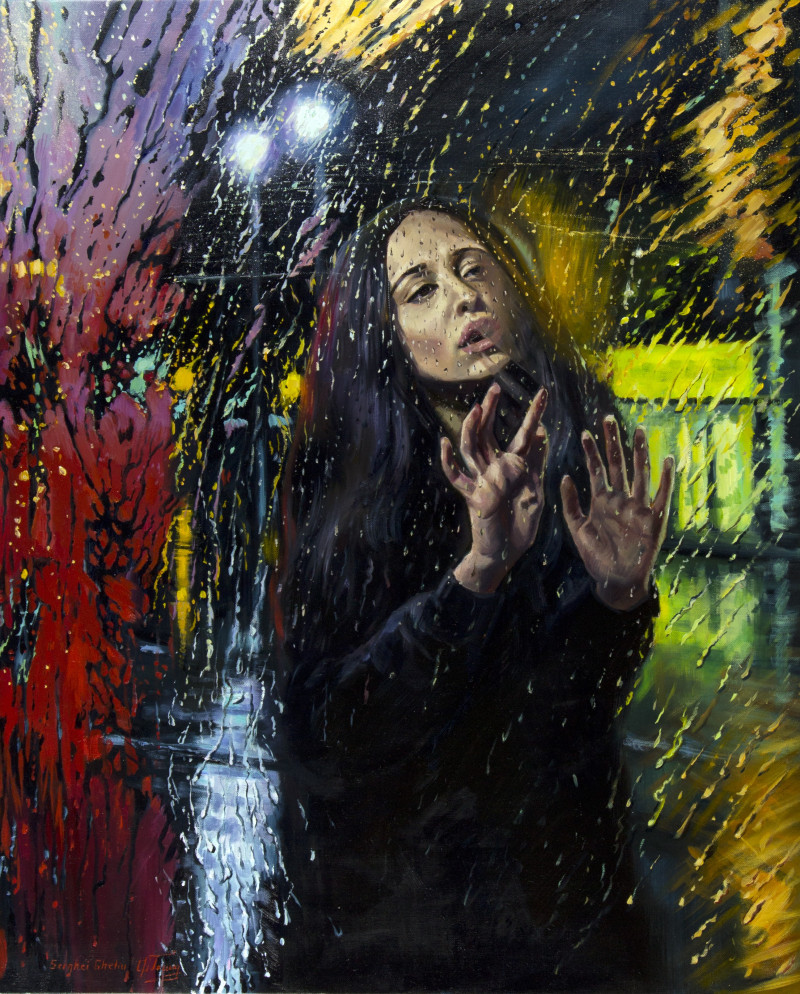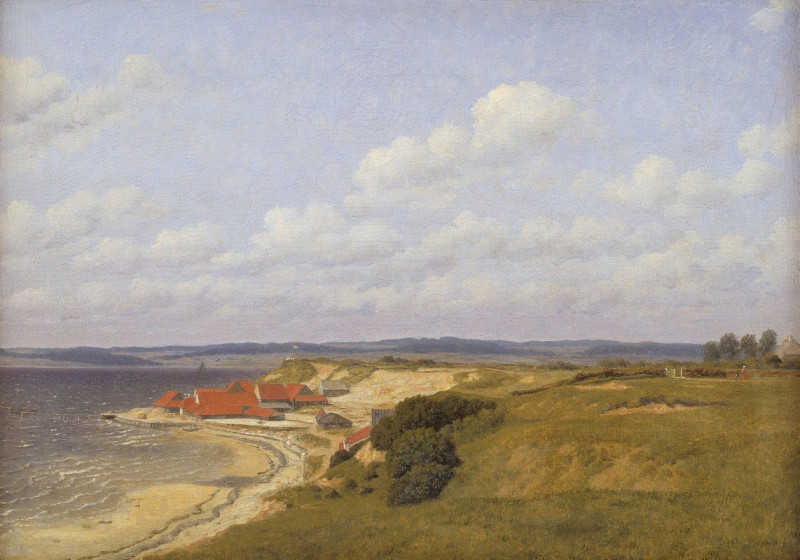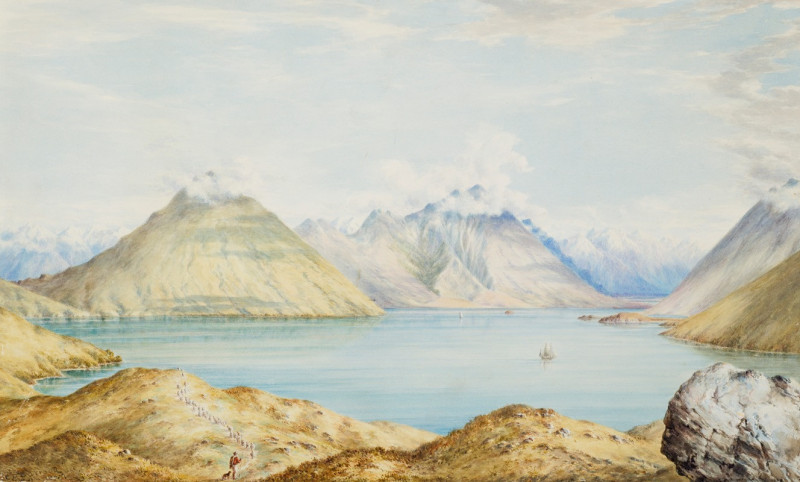Garden gate (1914)
Technique: Giclée quality print
Recommended by our customers
More about this artwork
"Garden Gate," a captivating watercolor painting by August Macke, created in 1914, transcends the typical boundaries of expression, presenting an enchanting view enriched with vivid colors and a dreamlike quality. At first glance, the viewer is greeted with a lively, inviting scene of a cozy neighborhood adorned by nature’s beauty.The foreground of the painting showcases a playful, multicolored fence, which draws the eye not just to its vibrant hues but also to the rhythmic pattern it forms, suggesting both resilience and openness. On the left side, a rustic wooden gate, partially obscured by verdant bushes, serves as a symbolic entry into a tranquil sanctuary, possibly a private garden filled with blooms and whispers of serene garden life.Beyond this colorful barrier, the artwork expands into a lush landscape dominated by a mix of trees and shrubbery, rendered in varying shades of green and touches of red. The depth of the garden is accentuated by a softly blended sky that harmonizes with the earthy tones below. The presence of a house with a prominent red roof nestles comfortably in this pastoral setting, adding a sense of human habitation and warmth to the composition.One of the most charming aspects of Macke’s work is his ability to infuse ordinary scenes with a profound aesthetic appeal, turning everyday sights into visual poetry. The interplay of color, form, and perspective in "Garden Gate" offers viewers not just a snapshot of a place, but an invitation to explore a world where beauty and simplicity coexist harmoniously.
Delivery
Returns
August Macke (3 January 1887 – 26 September 1914) was a German Expressionist painter. He was one of the leading members of the German Expressionist group Der Blaue Reiter (The Blue Rider). He lived during a particularly innovative time for German art: he saw the development of the main German Expressionist movements as well as the arrival of the successive avant-garde movements which were forming in the rest of Europe. Like a true artist of his time, Macke knew how to integrate into his painting the elements of the avant-garde which most interested him.

